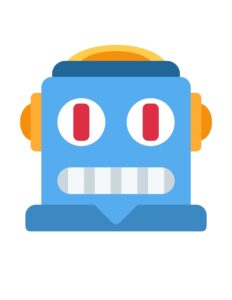When I made the decision for Trondent to initiate development on our first AI based project, I found myself in the position of having to explain what Artificial Intelligence is to members of staff, customers, friends, and family – people with a variety of backgrounds ranging from very technical to those who still think that Chrome is the shiny stuff on your car.
I quickly discovered that many people who seemed to have some knowledge of AI learned most of what they know through Hollywood. Ok, at least it was a start. While the reality is that there is some truth to what Hollywood portrays, much of it is fantasy and has not yet been developed, although I think that doing so is only a matter of time.
I also discovered that even for those who understand AI a little, there is also a lot of confusion among its very disciplines, such as Machine Learning. In this article, I’ll explain Trondent’s interpretation of AI and the manner in which we have implemented it.
Short History Lesson in Artificial Intelligence
As a young boy I grew up watching television shows like the original Star Trek, Lost in Space, and The Jetson’s. These all had robots that could talk, think, and do things. Then came 2001: A Space Odyssey with HAL 9000, and then Star Wars, along with R2D2 and C3PO (more robots!). And lest we forget The Terminator – a cyborg assassin touting a Neural Net Processor and self-awareness (a killer robot with flesh and blood!). I think that most of us can relate to all these shows and movies and would also say that this in part is what formed our initial view of AI.
In the real-world, actual work on AI began in the 1950’s. No real progress was made as development goals were too broad and the computers required to perform AI based operations were purpose-built and very expensive. By the time the early 70’s rolled around, millions had been spent on R&D with very little to show and the industry took a step back for a while finally regrouping in the 80’s focusing on more narrow approaches to AI. Finally, in the late 90’s, IBM brought its AI driven Deep Blue to center stage beating world chess champion Garry Kasparov.
By the time the new millennium rolled around, things really picked up steam. iRobot introduced the Roomba, the Shanghai World Expo introduced the dancing NAO robots (again, MORE robots!), Apple, Google, Amazon, and Microsoft all introduced various “assistants” (chatbots) and Google, among a host of others, started working on self-driving cars.
Homes got “smarter” with systems like Nest, Ring, and the like so now you can automate your lights, security, music, and sprinkler system, amongst a growing list of others. I would be remiss if I failed to also mention IBM’s AI driven Watson beat the stuffing out of Jeopardy’s two best performers of all time.
Ok, But I’m Still Confused
At this point I’ll bet there are some of you thinking that robots are about to take over and Judgment Day is only a matter of time. If this is keeping you awake at night, don’t worry as this is a lot of the hype Hollywood has served out. Let’s consider the history lesson above. Early efforts into AI development essentially failed because the scope of these efforts was too broad.
The approach to AI at the time was referred to as “General AI” and was intended to essentially create an electronic brain that could perform all of the functions that a human could. Couple this with a sense of “self-awareness” and you have the robots depicted in the earlier examples of our history lesson.
While I think that it is foreseeable to develop such technology, it simply does not exist today.
Now recall Deep Blue and Watson. These are great examples of “Narrow AI”, the technology approach that currently exists today. With Narrow AI, individuals possessing certain Domain Knowledge must program the appropriate knowledge and rules into an AI brain or engine. The effectiveness of these systems is only as good as the experts behind them.
While Deep Blue kicked major butt in chess, it would have had its lunch money taken away in a simple game of checkers because it only knew and understood chess. The Brookings Institute states that Narrow AI involves machines that are capable of responding to stimulation with responses that are consistent with human qualities such as judgment, intention, and contemplation.
What About Machine Learning?
Fair question and one that needs little time to discuss. Originally considered a subset of AI, Machine Learning has now attained a similar status of AI and is actually a Yin and Yang counterpart to AI.
Where AI uses algorithms to generate new facts (or answers to problems), Machine Learning uses facts to generate new algorithms. An example of this everyone is familiar with are those emails we constantly get from Amazon that tells us of all the things they think that we would be interested in buying.

Behind the scenes at a very simple level, Amazon sees that you purchased seven items which happen to be the same seven items purchased by someone else who purchased a total of fourteen items. Because of this similarity, Amazon suggests to you that you might be interested in some of the seven other items the other individual purchased.
In reality it is a bit more complex than this as the comparative sample size is a lot more than one other person and many other factors are considered such as similar spending habits, zip code, browsing history, etc. The results of Machine Learning activities can often serve as inputs into AI applications.
Artificial Intelligence Applications for the Travel Industry
The travel industry, well known for its inefficiencies in a transaction-driven business is ripe for AI opportunities. Several large TMCs have already announced initiatives in customer service chat bots, Hilton has introduced an IBM Watson-powered concierge, and both Chrome River and SAP Concur have announced AI initiatives to help detect fraudulent or out of policy expense reporting. Expect also to see other innovations such as booking applications that help you make decisions around personal preference or travel policy.
We Harnessed Artificial Intelligence for Travel Policy Compliance

Trondent has been providing travel policy compliance and management capabilities through its Authorizer and Authorizer PRO platforms for nearly twenty years. These tools provide a workflow engine capable of routing an approval request to the appropriate approvers in an organization and with the introduction of Authorizer PRO we are able to apply a series of if/then rules based on travel policy to determine opportunities for automated decision making.
Notwithstanding our best efforts to totally eliminate manual approvals, we have learned that it is nearly impossible to obtain 100% policy compliance 100% of the time and our clients generally end up sending non-compliant trips for manual approval.
This process is flawed for several reasons. First, many approvers do not truly understand their company’s travel policy. This results in decisions being made that often cost the company money.
Second, manual approvals have a soft dollar impact to the bottom line as each approver must take time away from their other responsibilities to approve travel. While our studies have shown that it takes an average of two minutes to manually approve a travel request, an average size customer with 50,000 trips to approve each year can expect a soft dollar cost to productivity of $80,000 each year.
Third, manual approvals can often be biased. Does the manager favor the project or individual that the travel is for?
Finally, many companies establish a rule that says that if the manager does not approve the request within a certain amount of time then go ahead and automate the approval of the request. Our studies of customer activity have shown that many approvers simply ignore these approval requests since they know the technology will deal with it. When doing an analysis for a global financial customer, we determined that this behavior allowed $1.3M worth of travel request to be approved at a cost of $830K above lowest logical fare. That’s a lot of money.
Ability to Reason like a Human
Considering there will always be customers that approve trips that are not 100% policy compliant, I determined that this would be a great opportunity to add AI to our tool set. With our new AI enhanced rules engine, we are now able to handle a vastly more complex rule set in addition to the rules that Pro can process. The one big difference between Authorizer PRO and Authorizer AI is that with AI we can determine a compliance score for each rule applied against a trip request and then establish a composite score for the request.
The corporation’s travel manager can establish a threshold that allows them to meet the company’s financial goals while increasing employee satisfaction. While Authorizer PRO evaluates a series of if/then statements that result in a black and white result, AI is able to consider the shades of grey similar to the way a human would reason. For example, if the corporate policy set a rate cap of $500, trips booked at $501 and $1,000 would both be non-compliant. AI would be smart enough to understand that the $501 fare is close enough and issue an automated approval while issuing an automated rejection of the $1,000 request.
What Does the Future Hold?

When I started Trondent in 1994, one of the first products we developed was our document delivery product which could only fax travel itineraries and invoices. Remember, at that time email was very new and was not yet widely used. Since then, we have developed delivery targets for email and mobile devices.
Now try to remember cell phones 25 years ago – remember how big the display was? What kind of drugs do you think I might have been taking if I told you then that you would be able to view your itinerary on your cell phone? My point is that technology quickly emerges and evolves in ways that are often hard to imagine. Don’t allow yourself to become complacent with your technology and keep an open mind as to how it could and will change. Just as people don’t fax anymore, technology that we have become very comfortable with will eventually go the way of the dinosaur. Trondent has a proud history of innovation. Yesterday it was sending itineraries to cell phones, today it is using AI to approve travel. What do you think it will be tomorrow?

